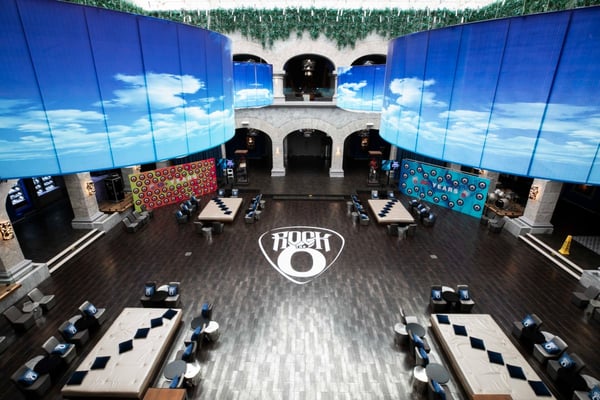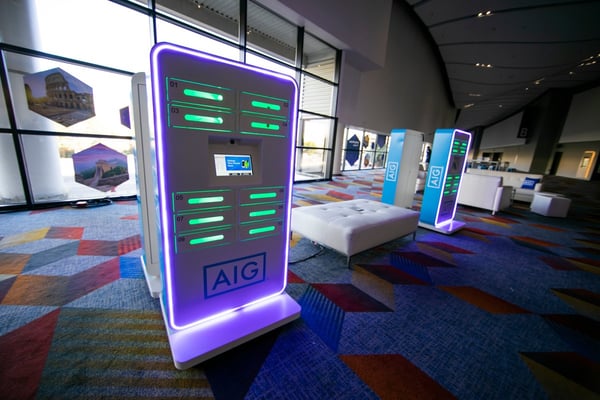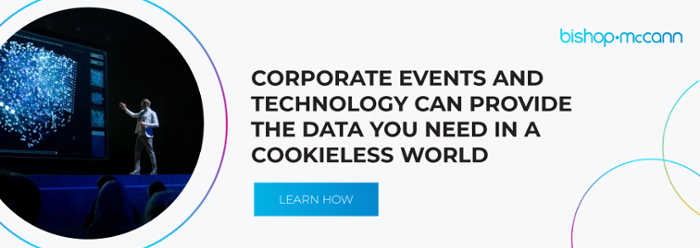 First impressions matter, and that statement holds true with respect to meetings and events. So what is the first impression for your attendees? Registration. From the invite to the registration website or the save-the-date email to arriving the day of the event at check-in, these are some of the most important interactions you will have with your guests—and too often these moments are not given enough consideration.
First impressions matter, and that statement holds true with respect to meetings and events. So what is the first impression for your attendees? Registration. From the invite to the registration website or the save-the-date email to arriving the day of the event at check-in, these are some of the most important interactions you will have with your guests—and too often these moments are not given enough consideration.
So for event planners like us, we pay close attention to the entire registration process as it sets the stage for the rest of your corporate event. While our creative team focuses on the visual appeal and feel of our website and check-in area, we also pay close attention to the event technology that can improve the registration and check-in experience.
Quick Links
- How Event Registration Can Shape Guest Experience
- Top Corporate Event Registration Obstacles
- How Event Technology Can Improve Event Registration
- Top Event Technology for Event Registration
How Event Registration Can Shape Guest Experience
The registration experience shapes your guests' perception of your corporate event. If you’ve ever attended an event where registration is poorly organized, then you know the impact that can have on attendees. Further, it’s important to remember that your vendors, sponsors, and others will also be using your registration and check-in spaces, so it’s a chance to put your best foot forward.
Imagine a comfortable space with informed, welcoming staff and event information organized in an intuitive and helpful way—a place where everything is easy to find and access. On-site check-in is quick and simple, and in no time, your guests move on to truly experiencing your event. In short, imagine happy attendees who’ve barely noticed the administrative portion of your event.
 Top Corporate Event Registration Obstacles
Top Corporate Event Registration Obstacles
With corporate events, it’s easy to get caught up in planning other elements. Let’s be honest: there are far more exciting elements of your event to plan. While registration doesn’t have the glitz and glam of venue and theme selection, it should be treated as one of the most important aspects of your event. While a well-run registration and check-in experience may not stand out as much as other facets of your meeting, a poorly run registration won’t be forgotten.
Chances are if you attend events regularly, you’ve seen many of the issues we’re about to discuss. Understanding the choices that may create friction at registration can help you prevent issues. Consider the following:
Registration forms - Try to keep forms as brief as you can in order to not deter attendees from filling them out. Collect only the required information and be mindful of form design. Ensure the form is capatible with many mobile devices.
Staffing - Your registration area will be the place many attendees stop to ask questions. This can tie up your staff, so ensuring there are enough people working registration to account for these questions is imperative. In addition to having enough staff, make sure they are well informed and can anticipate and answer any questions that may come their way.
Technology - Checking your tech before an event is essential. Make sure your website and network have the bandwidth to handle attendee volume.
Amenities - Some attendees will be arriving after travel, and others may just want some time to relax before beginning your event. Having comfortable seating, light snacks, and drinks boosts their mood from the start. Wireless charging stations are an added bonus.
Information - Many guests will simply be looking for basic information that can be provided through your website or event app. Have signs and instructions to facilitate self-help and service.
Flow - Perhaps one of the biggest obstacles at event check-in and registration areas is a lack of flow. When designing an entryway, keep the area open with a clear path for your guests to take without creating bottlenecks or other issues.
Thankfully, there are ways to alleviate these concerns through working with the right event planners and using the right technology.
How Event Technology Can Improve Event Registration
Event technology has the potential to enhance your guests’ registration experience and, frankly, yours as well.
Not only can technology help streamline your check-in process, but it can also decrease staff utilization, attendee stress, and costs. In addition, it can assist with and improve the accuracy of event data.
 Top Event Technology for Event Registration
Top Event Technology for Event Registration
Given the benefits of including technology in your event registration and check-in process, we know how imperative it is to utilize it. However, it’s also important to recognize which technology is best to use.
1. Event apps and websites
Your event app and website are a great place to start. Allow pre-registration and provide your attendees with all the information they’ll need upfront. These days, many people have saved data and can autofill forms, making both payment and your event registration simple and fast.
Online registration also allows you to personalize the registration experience. Your event isn’t one size fits all. If you have various types of attendees or different activities/sessions to choose from, you can walk your guests through a simplified process prior to attending without slowing down check-in or creating confusion at your event.
Finally, from the personalization we just discussed to directions and more, your guests will know what to expect before they’ve even walked in the door. Further, this can take some of the burden off your staff.
2. Self-service kiosks
Most people have become accustomed to self-service kiosks. We use them at airports, train stations, restaurants, and more. They’re intuitive, and they’re designed for the person who wants to move through spaces independently and quickly. Further, you can put kiosks in a variety of places, not just at your venue. If you know the bulk of your attendees will be staying at a particular hotel, you can work with them to include a kiosk in their lobby.
3. Radio frequency identification (RFID)
With an RFID badge or wristband, your guests can quickly check themselves in with a wave of the hand or wrist, ensuring lines move steadily and swiftly. In addition to speeding up lines, you also get real-time, actionable data about where your attendees are, allowing you to proactively pivot when there are crowds or long lines.
This technology also makes it possible for corporate event planners to strengthen security, map user behavior, and monitor attendee engagement levels without inconveniencing attendees. Similarly, sponsors can get in by offering special offers and content without being intrusive. Again, a wave of the wrist and you, your team, and your sponsors have a significant amount of data. The larger the number of attendees, the more difficult it is to gather data and enhance the attendee experience through efficiency and safety. RFID enables you to do both.
Additionally, this allows you to track your attendees to know what is most important to them, thus enabling you to incorporate more of what they like in the future. For example, take note if a particular section on the expo floor is busy on day one but not much after. Be sure to quantify observations to make real-time changes (or at minimum, for the next event).
Ultimately, any event is about the attendee experience, and your registration and the event platform will set the tone for the rest of the event. Be ready to wow your guests from their first interaction to their last by using the right event technology.
Want to ensure you have the right tech? Then work with an event planning team with years of expertise and experience. We’ll bring the right tone, the right tools, and the right tech for the job. Reach out to Bishop-McCann today, and let’s start creating JOY!
